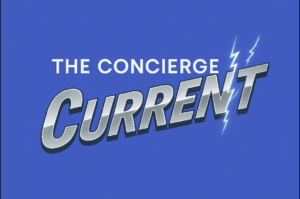Limited or No Budget For Energy Projects
Limited or No Budget For Energy Projects

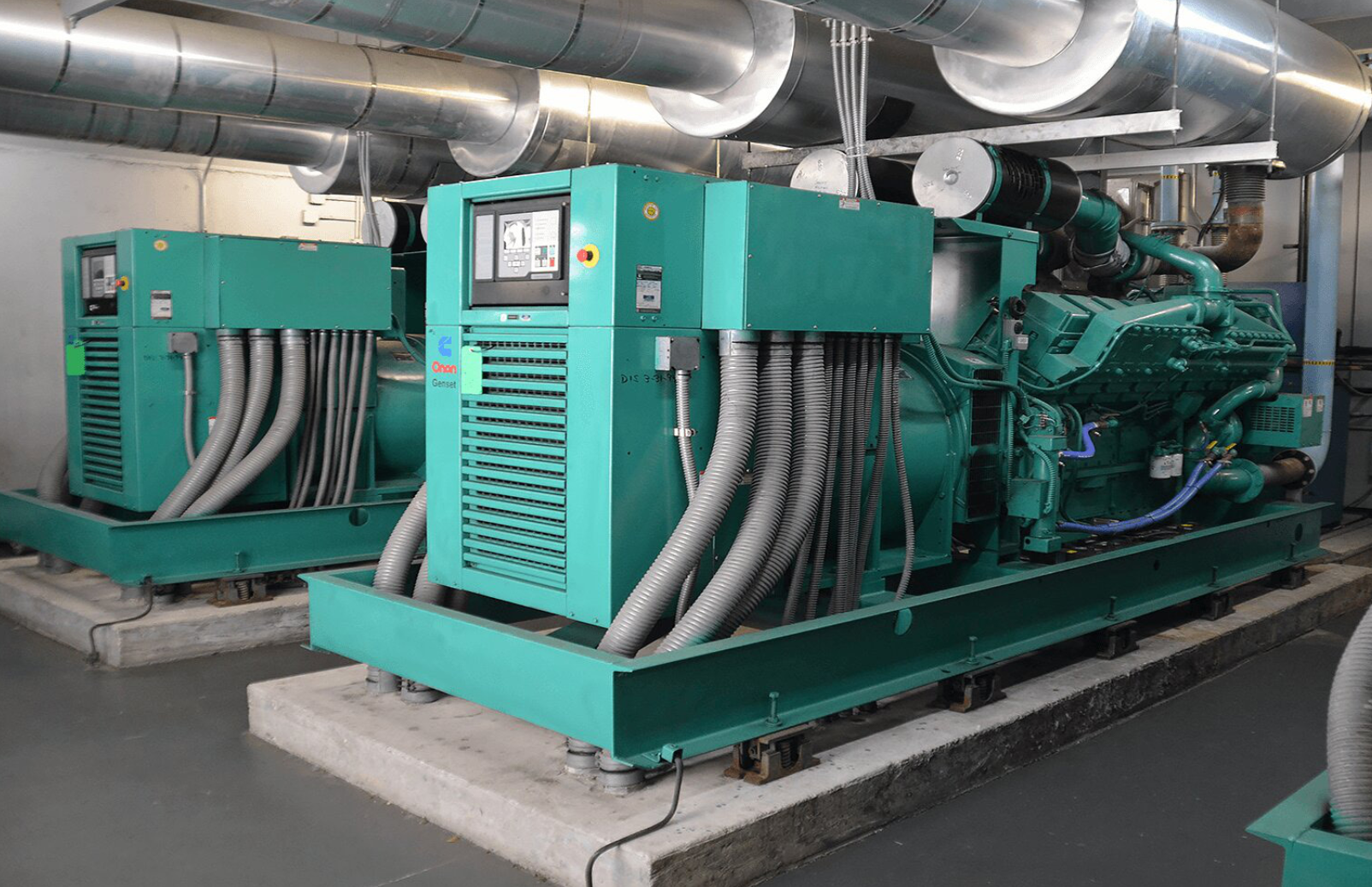
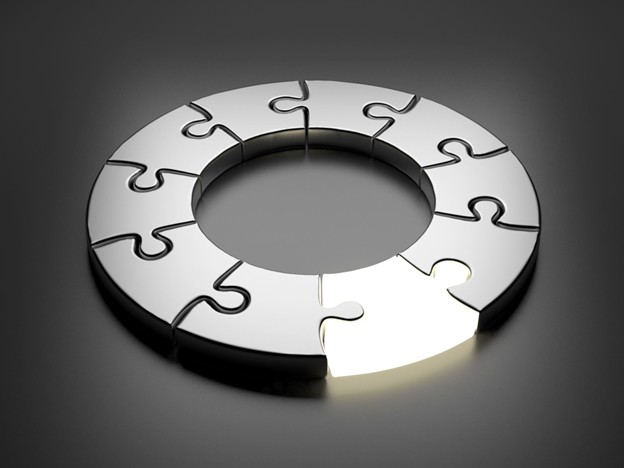
THE PROBLEM
Energy as a Service or purchase the equipment?
For most organizations, the best backup generator is the one they do not own. Instead, they allow someone else to deploy the vast capital required, and to own, operate, maintain, and manage the equipment for them. Backup Power-as-a-Service from Exergy provides these services and permits us to maximize the savings to you.
To learn more about Backup Power-as-a-Service, please click here:
The following decision tree will help you decide on the best generator for you:
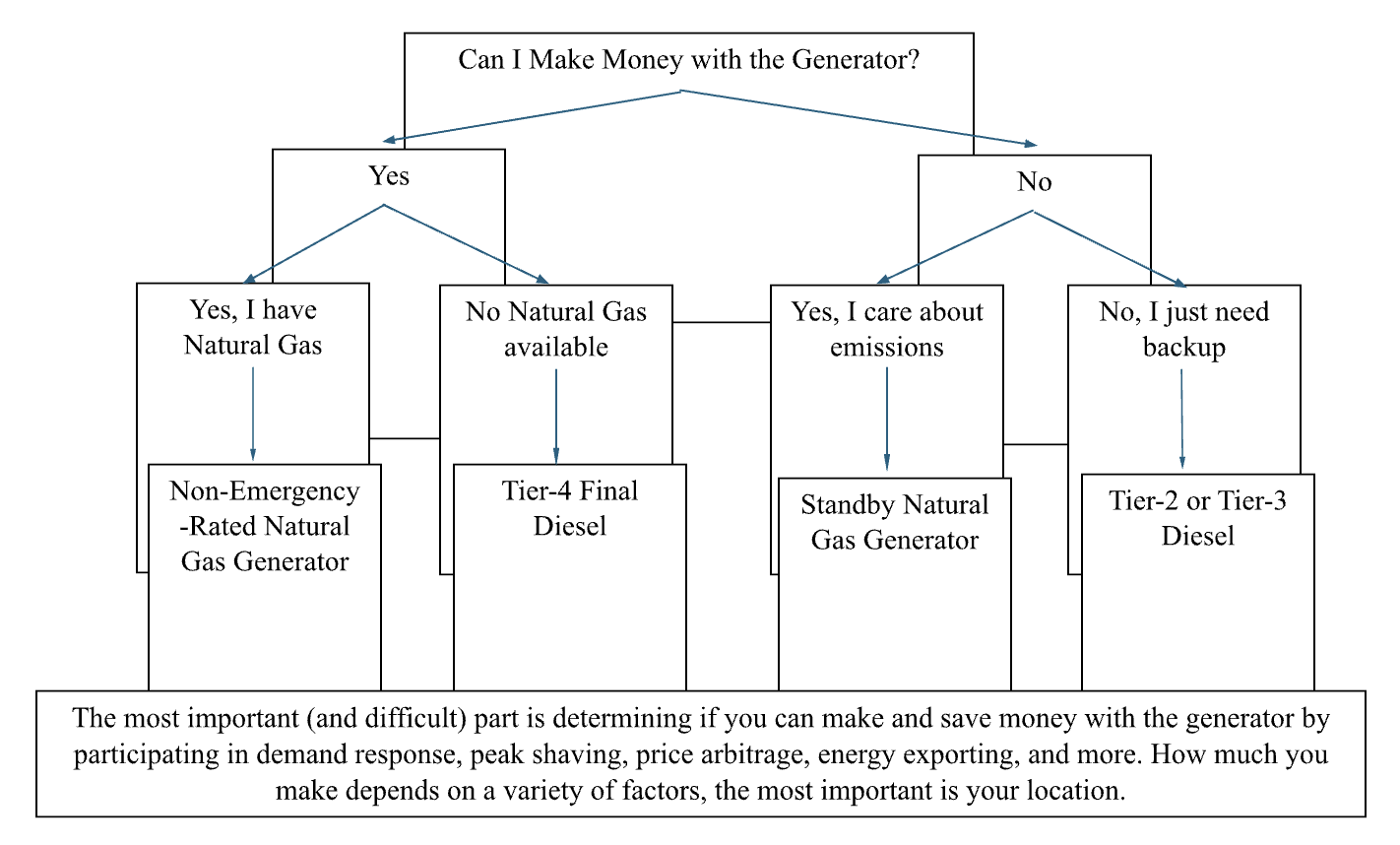
Calculating, Tracking and Reporting Carbon Footprint
Calculating, Tracking and Reporting Carbon Footprint



THE PROBLEM
How do I report my carbon intensity and benchmark the results?
Carbon intensity, greenhouse gas emissions reporting, and benchmarking are increasingly required by cities, counties and even states. As you can see from the map below, this requirement is widespread and growing. At most recent count, 41 cities now have reporting requirements.
Luckily the vast majority of these organizations utilize or will accept the reports directly from the EPA’s Energy Star® Portfolio Manager®. You can learn more about Portfolio Manager® at the EPA’s Energy Star® website: https://www.energystar.gov/buildings/benchmark?s=mega
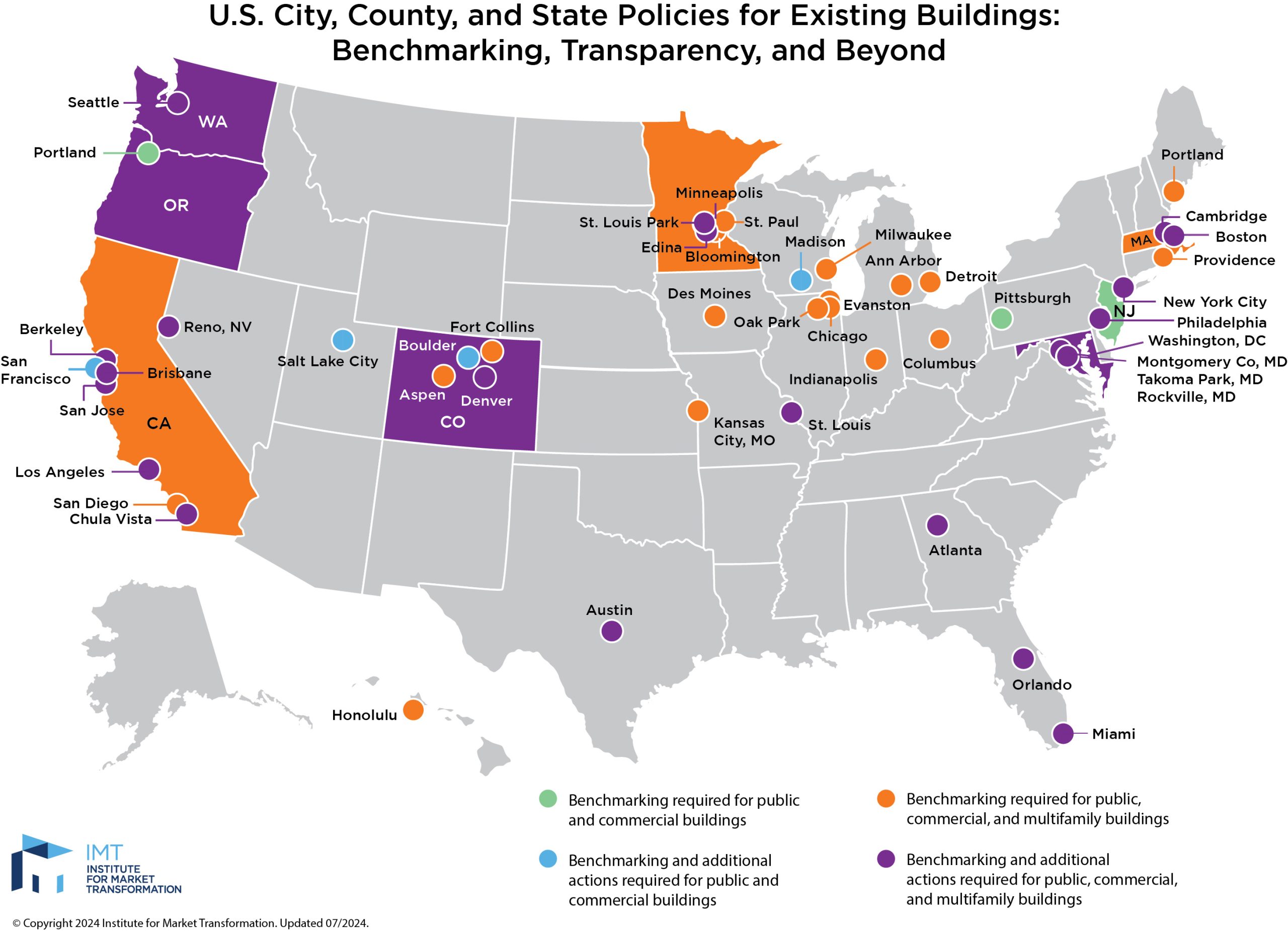
Portfolio Manager® can track energy use for all your facilities and provide the calculations and reports for regulatory submittal. In addition, you can monitor your improvements, set goals, and benchmark your facilities against the average and the best performers in your industry.
Furthermore, Portfolio Manager® can be configured to accept automated data directly from your utility, saving you time and preventing errors that result from manual data entry.
Exergy Energy’s customers enjoy free Portfolio Manager® services. We take responsibility for setting up and managing Portfolio Manager® for our customers, including connecting the utility program interface for automated data feed.
How Do I Electrify My Operation?
How Do I Electrify My Operation?
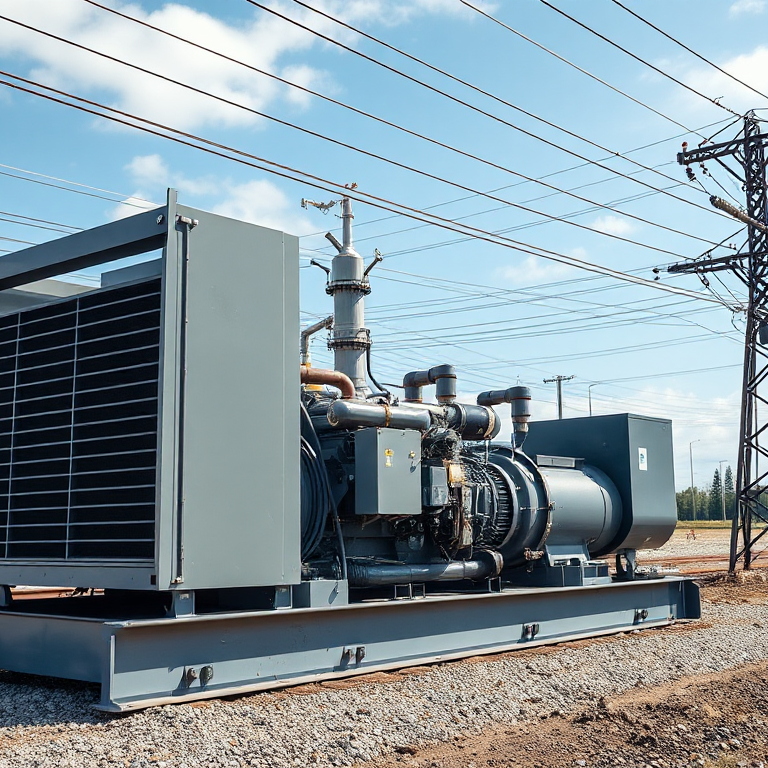


THE PROBLEM
How do I electrify my operation?
Electrifying your operations requires converting fossil fueled heating processes to electricity. This conversion ranges from very simple, to extremely complex and expensive, depending on the temperatures required.


The Big Problem
Electrifying your operation will result in lower overall energy consumption since electric system are more efficient than their fossil counterparts. The problem (and the major expense) is that electrification is not just about efficiency and decarbonization, but a shift in the energy supply system: The energy previously provided by the natural gas pipeline must now be added to the electric service. For many companies, electrifying a facility can easily double, triple, or even quadruple electricity demand.
A facility’s electricity service cannot easily or inexpensively expand by this amount. More problematic is that the utility may not be able to supply the necessary electricity without significant upgrades and a significant amount of time. Some utilities require up to three years to accommodate an electrification upgrade.
If you are planning on electrification, the first step is to start conversations with your utility.
My Carbon Footprint Is Too Large
My Carbon Footprint Is Too Large



THE PROBLEM
How do I reduce my carbon footprint?
There are four (4) ways to reduce your carbon footprint:
- Reduce your energy usage.
- Shift to lower carbon energy sources.
- Change the timing of carbon-intensive operations.
- Redesign your product or service to use less energy.
Reduce Your Energy Usage
Reduce your energy consumption without changing your operations by installing energy-efficiency upgrades.
Shift to Lower Carbon Energy Sources
For most firms, this requires electrification of processes that employ fossil fuels, such as shifting from natural gas or fuel oil, to electricity. While conceptually simple, it’s difficult in practice for firms with significant heat loads, since the increase in the required electrical infrastructure may not be supportable by the grid or otherwise expensive upgrades or a substation.
To learn more about the carbon content of energy sources including the grid, please click here:
Change the time of Carbon Intensive Processes
This strategy only applies to electric processes. The contribution of renewables to the grid varies throughout the day: Solar will dominate from mid-morning to late afternoon, and wind is typically most productive in the middle of the night. By shifting your carbon intensive processes to these times your effectively using less carbon intensive electricity even though it is from the grid.
Redesign your Product or Service
Ninety percent (90%) of the energy required by your product or service is determined by its design. Go back to the beginning with a white sheet of paper and review your design, focusing on the energy content of the process and parts. Changing parts from cast metal to sheet can save energy. Consider 3D printing on investment casting, rather than milling and forging. Exergy Energy has a patent on how to optimize energy consumption in production.
There are more ways to reduce your carbon footprint, these are just the easiest and fastest to achieve results. If you would like to go deeper and explore ways to reduce your carbon footprint, please schedule time with one of our energy specialists.
To learn more schedule a free call with one of our specialists here:
I'm Spending Too Much On Energy
I'm Spending Too Much On Energy

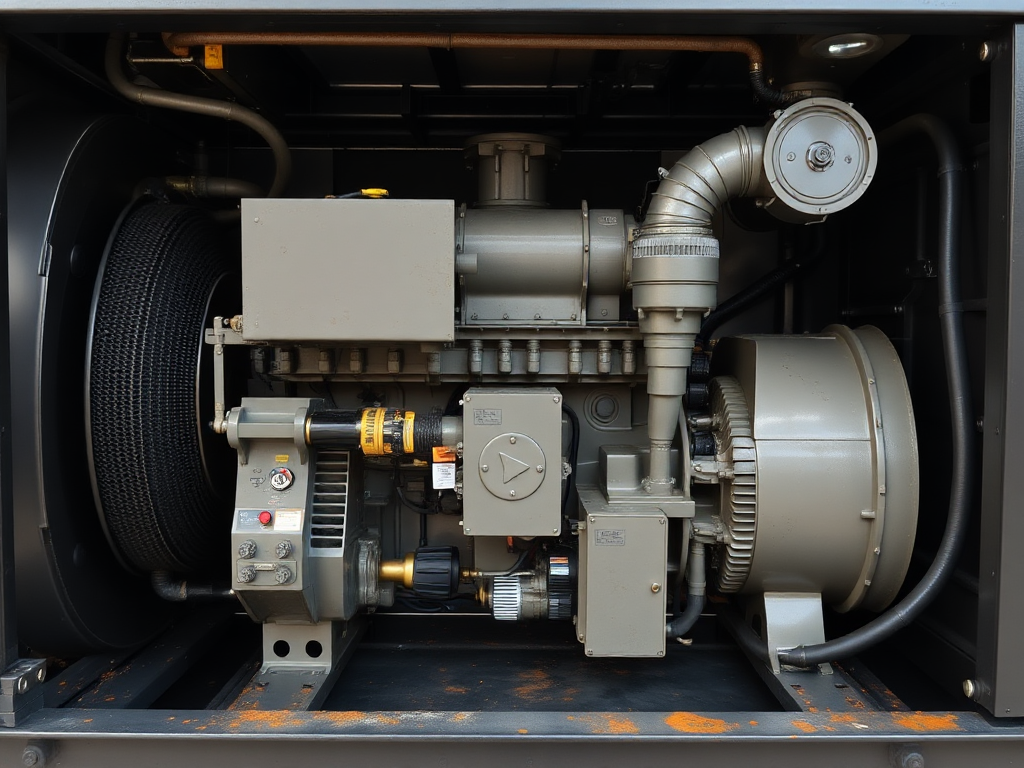

THE PROBLEM
How do I reduce my energy costs?
There are four (4) ways to reduce your energy costs:
- Procure from lower-cost suppliers.
- Reduce your energy usage.
- Engage in peak shaving to reduce your Capacity & Transmission costs.
- Make money with your backup generator by participating in grid-support programs.
Procure from Lower-Cost Suppliers.
Companies in states with deregulated electricity markets can purchase from alternative, lower-cost suppliers. Yet over 70% of companies still subscribe to their default local utility tariff at a premium price. Significant savings are available by changing your energy supplier.
Electric Supply Option
Reduce Your Energy Usage.
Reduce your energy consumption, without compromising your operation, by installing energy efficiency upgrades, such as LED lighting, upgrade HVAC, and by electrifying your operations.
Engage in Peak Shaving to Reduce Your Capacity & Transmission Costs.
Up to 50% of your monthly electricity bill may be due to Capacity & Transmission costs related to delivering power over long distances across high-voltage lines. Such charges are often determined by your energy draw across a handful of hours each summer during peak times. Reducing or eliminating your power demand by shifting to batteries or a genset during those hours is called “Peak Shaving,” and it can eliminate these costly charges.
Make Money With Your Backup Generator
If your operations are flexible and you can shut down some equipment on demand, the grid will pay you. This pay-for-load-reduction is called “Demand Response.” Such programs are available in many deregulated markets. Also, as discussed above, a backup generator can be used to provide demand response without you having to reduce your usage, or even allow you to sell power back to the grid at a profit. In some geographies, using a backup generator in this manner can result in a free generator.
Power Quality
Power Quality (Flickers, Power Surges/Sags, Outages)
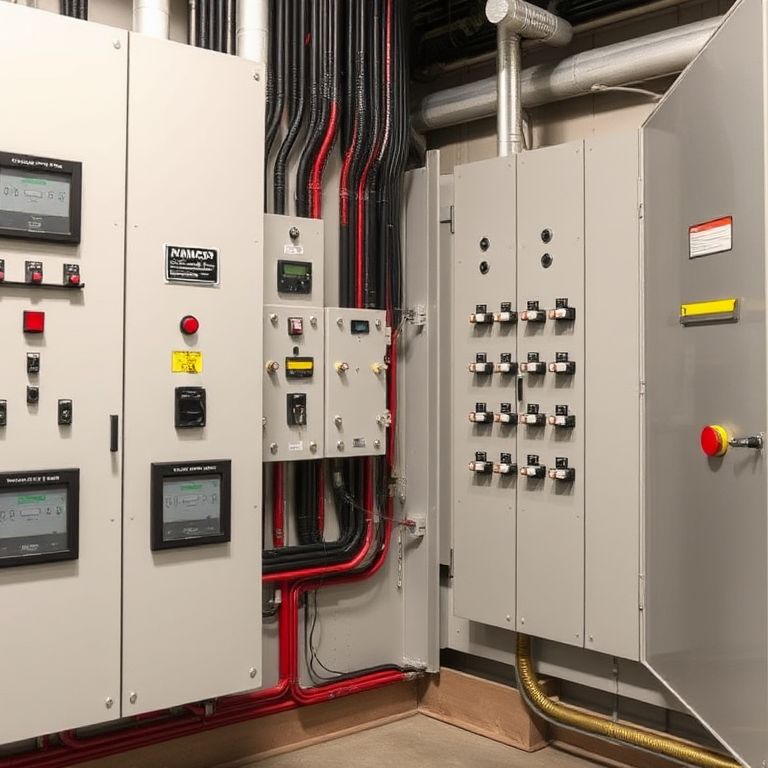
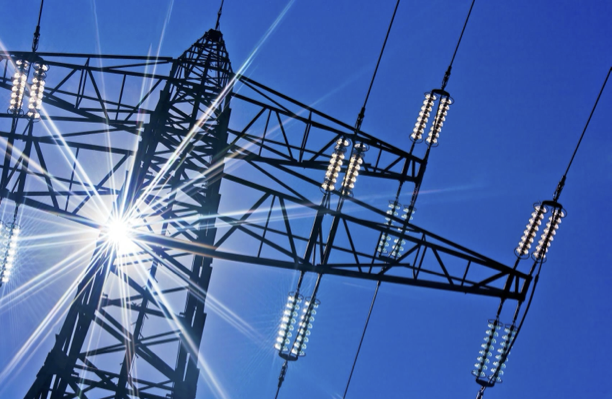
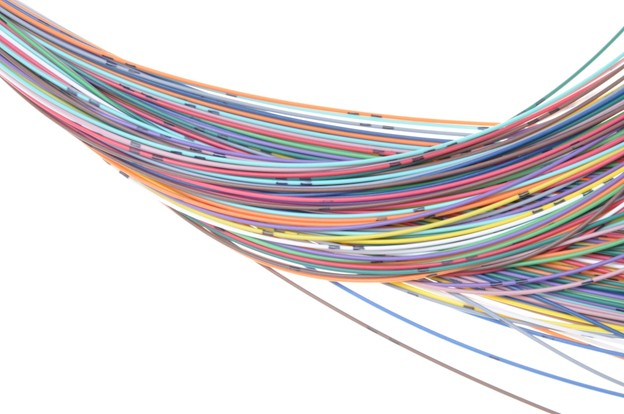
THE PROBLEM
Do I have a power quality problem?
Here’s a scenario: Your facility goes dark; a few seconds later the lights come back on (or momentarily flicker) and your high precision process shuts down. You mutter an expletive under your breath and blame the utility for a power outage.
This is not an outage; at least not according to the way utilities report outages. This is a power quality problem.
Power Quality Problems
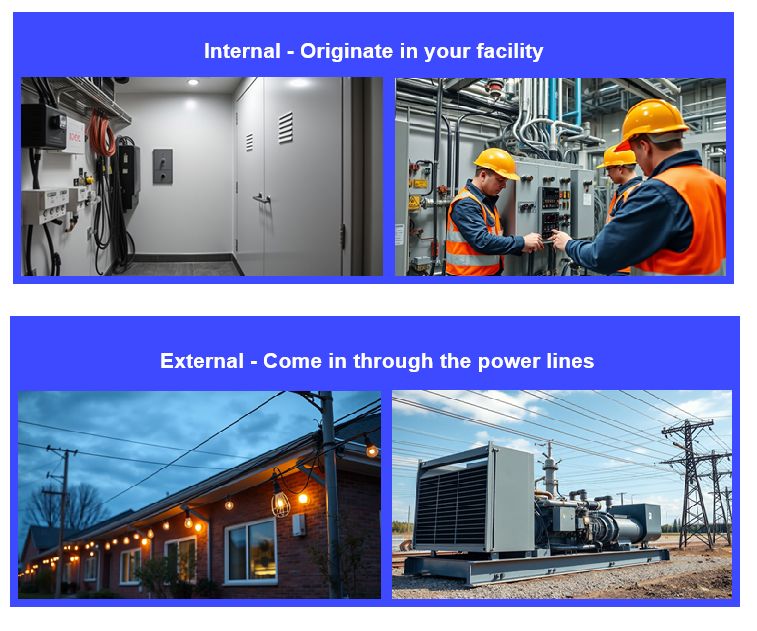
Internal problems are typically the most prevalent; they are caused by large motors starting (power factor) or by harmonics caused by variable frequency drives(“VFDs”). These issues can be addressed with power conditioning equipment.
External problems are more complicated; they arise from a variety of sources, ranging from the VFD’s at the plant next door, to the rooftop solar in the subdivision that is fed from the same utility line as your plant. Solving these problems is time consuming to identify and expensive to solve.
It is difficult to find the root cause of power quality problems. If you are experiencing these momentary “blips” and shutdowns, schedule a free consultation with one of our energy experts here.
Choosing a Generator
Choosing a Generator

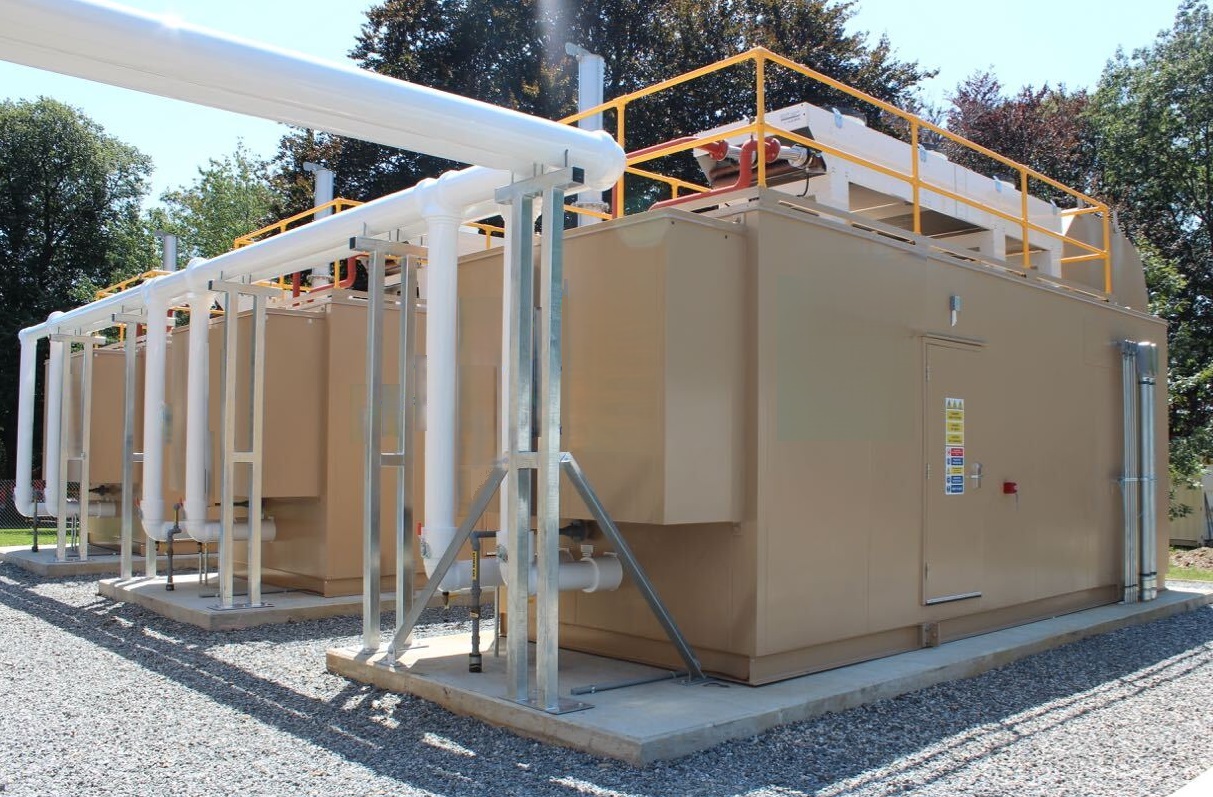
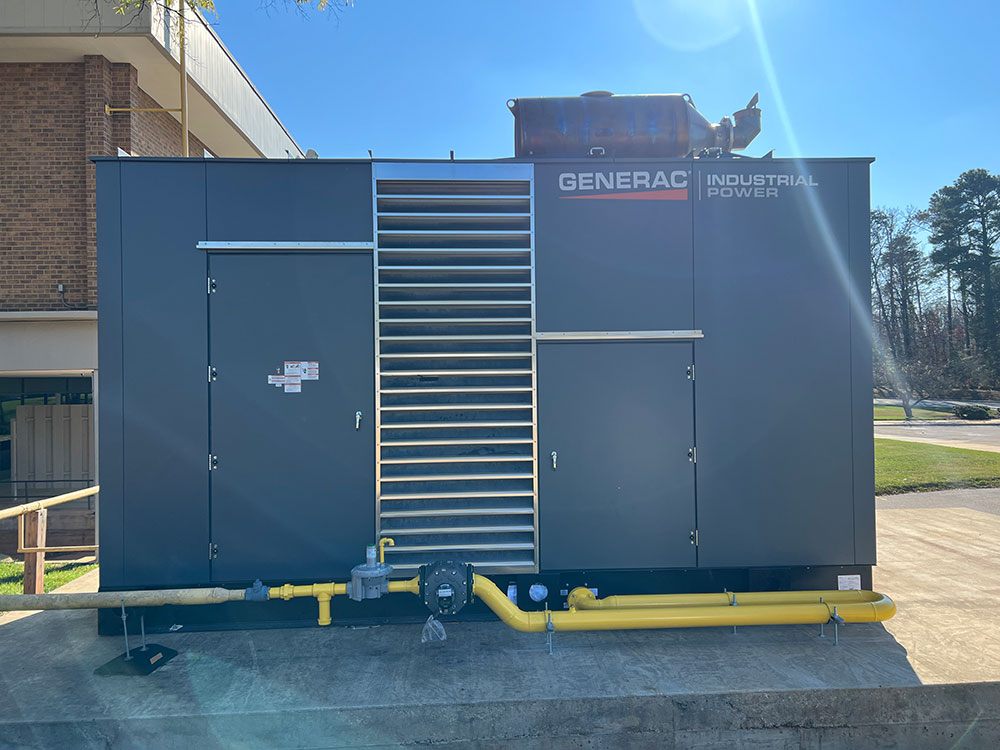
THE PROBLEM
What is the best backup power for me?
Determining the best solution for you is a decision tree process. Each question you answer helps refine and narrow the path to the best solution.
FIRST QUESTION
Do I want to purchase and own the equipment or would I rather procure backup power as a service and pay for it on a monthly basis?
Just a few years ago, equipment purchase was the only option. But with the advent of Software as a Service and the popularity of outsourcing non-key functions, more and more organizations are choosing Backup Power as a Service.
The first benefit of Backup Power as a Service, is that you don’t need to answer any other questions. Your service provider (in our case, Exergy the Concierge Utility), will provide you with the best solution to meet your organization’s needs and budget. There are of course many additional benefits to Backup Power as a Service. We list a few of the most important below.

- No upfront capital cost. You simply pay a monthly service charge and save your capital to build your business rather than investing in an insurance policy.
- Reduce risk and eliminate mistakes. Let experts, who understand the equipment, technology and energy markets make the decision for you. Purchase what you want to buy: security that if the grid goes down you have power, rather than equipment that can perform this function but only if it was specified and installed corrected, managed and maintained according to manufacturer specifications.
- Save money. Backup generators and batteries, when managed by professionals, can earn money by helping the grid, through programs like demand response. Most organizations lack the experience and access to the energy markets to participate in these programs, which can be quite lucrative. Backup Power as a Service is often substantially less expensive than owning and maintaining the equipment.
- People. For most organizations, the operations and maintenance staff is already overloaded and are not equipped to manage and maintain a very foreign piece of equipment that is not core to their or your organization’s everyday functions.
- Confidence and peace of mind. Some organizations, especially those in the healthcare and life safety arenas have regulatory and reporting requirements for backup power that can be both onerous and expensive if not managed properly. Let experts who deal with these issues everyday with for many customers take remove this burden from your to-do list.
- Continuous improvement and future proofing. Your service provider (Concierge Utility) becomes your partner and an outsource energy department that only has your best interests at heart. A Concierge Utility learns your business and makes sure that systems and services are evolved to meet your changing needs.
I’ve decided to purchase the equipment.
Time to start our journey. There will be multiple questions which might loop back on themselves sometimes.

NEXT QUESTION
Is there anything that can’t go down (dark) at all?
Some equipment can be severely damaged or create life threatening situations if power is abruptly turned off. These systems need to ride through the initial stages of an outage to either perform a controlled shutdown and keep running until power is restored, either from the grid or from backup.
Backup power systems, whether generators or batteries are not instantaneous. They take some time, typically 6 to 30 seconds to come on line. If you have any systems that cannot “go dark” for that period of time, you need an “Uninterruptable Power Supply” (UPS) that works instantaneously.
A UPS is not a battery at least not in the sense that the term is commonly used. UPS equipment is highly specialized and very extensive.
Typically, only a few items, like computer systems, emergency controls and life sustaining equipment require UPS and dedicated UPS systems are installed at point of use for this critical systems. Backup power is they provided upstream from these systems.
NEXT QUESTION
How long do I need to keep running?
This is a much more complicated question than initially appears, since the grid can go down for as little as a few seconds to as long as weeks or even longer.
This question is easy for some organizations. For example, a retail mall store without perishable inventory probably does not require backup power, since the customers are likely to leave anyway, because they can’t continue their shopping unless the entire mall had backup power.
On the other end of the spectrum is a skilled nursing home. Here the entire facility needs backup power for the entire length of the outage.
Your unique operation will determine what is the appropriate duration or durations to be covered. The plural, “durations” is because different operations may require different backup durations. For example, a food processing plant might have two separate duration requirements. A short-term backup of a few hours to shutdown operations and clean the plant and put it into standby and a long duration need for the refrigerators and freezers.
If you are facing an extended outage, what is your operation plan? Can your employees even get to the plant if the outage is caused by weather? How much inventory do you have on hand to keep operating if deliveries are delayed? In any organization there are likely differing duration needs and goal is provide the right backup at the lowest cost.
Batteries are only economical for a couple of hours of duration, while fossil fuel generation (diesel, natural gas and propane) can provide short and long duration power.
NEXT QUESTION
I have decided on long term duration backup power. What is the best generator for me?
Long duration backup power requires a fossil fuel. While there has been much hype regarding hydrogen, there is no hydrogen infrastructure and hydrogen storage is extremely expensive and because the volumetric energy density is so low that long duration power is infeasible with on-site storage. That leaves us with diesel, natural gas or propane.
Which of these fuels depends on a number of factors:
- What is available?
- Delivery during an emergency.
- Alternative use of the generator
In general, if pipeline natural gas is available nearby, this is often the best option. The generators tend to be more expensive but the reduced maintenance surety of fuel delivery and the ability to use the generators for grid support programs, such as demand response, makes them competitive with both diesel and propane with similar emission characteristics.
Many locations lack economical natural gas. Either it is unavailable completely or the pipeline is too distant to be economically viable to tap. In these cases, an on-site stored fuel such as diesel or propane is the only option.
The decision between diesel and propane comes down to 2 factors:
- Price difference.
- Participation in grid services such as demand response.
There are many areas of the country where propane is less expensive than diesel and on-site storage of propane is simple, and inexpensive. Propane burns much cleaner than diesel and can participate in grid programs without additional emission controls. Participation in grid programs such as demand response and peak demand shaving can substantially reduce the effective cost of a generator.
Diesel emissions are very high and these generators cannot be used for anything other than emergency backup (grid is down) unless they are equipped with significant emission controls which typically doubles the price of the generator. Diesel generators are classed by Tier with Tier s 2,3,and 4 available on the market. Only Tier 4 Final is allowed under law to operate in non-emergency situations.
If your operation is only interested in emergency backup, “grid outage” and the utility does not offer grid programs such as demand response and peak demand reduction, the least cost solution will be a Tier 2 or Tier 3 diesel running with renewable diesel in order to obtain an Investment Tax Credit. You can learn more about Renewable Diesel and the ITC here:
Often a major determinate is the availability of fuel during an emergency. Natural gas, which is delivered via underground pipeline, is impervious to weather conditions and will continue to operate. Diesel and propane require delivery by truck and during an emergency, deliveries maybe impossible. A secondary consideration is alternative fuel use. If damage is wide spread, diesel fuel is often rationed in order to make sure of its availability for emergency vehicles and support crews. Many businesses with diesel backup generators were unable to keep operating because of an inability to obtain refueling service. This is one of the reasons that major brands often require their suppliers to have natural gas backup power rather than diesel.
I have decided on short term duration backup power. What is the best generator for me?
Short term, which we defined as no more than a couple or hours, opens up the opportunity for battery backup in addition to the solutions above for long-term backup. A long term solution can be used for short term, but the reverse is not true. A battery will provide backup only for a couple of hours. So if you are considering battery, you must be absolutely certain you will not want or need backup power past 3 to 4 hours.
The economics and pricing of batteries versus generators can be confusing. Batteries are sold based on the number of kilowatt hours it can provide. Generators are priced by kilowatts since they can run indefinitely if there is fuel available. On average, if you do not care about an outage lasting longer than 4 hours, a battery will be your lowest cost solution. It is important to remember that the lower cost comes with a hard constraint. You will not be able to operate for more than 4 hours.
A four hour battery maybe a perfect fit, if you do not plan to operate for longer than 4 hours during an extended outage (even for days or weeks). Since most outages are of short duration, a battery may be enough to protect you from a lot of outages. We have calculated that a 3 hours battery in Massachusetts will be sufficient to keep you running through 43% of outages.
IN CONCLUSION
The best generator for you is a function of a decision tree that takes into account:
- Own the equipment or purchase as a service.
- Do you need uninteruptable power?
- How long do I need backup power for?
- Do I do battery, diesel, natural gas or propane
- Do I plan on using the generator for non-emergency (money making) activities.
The decision tree can become quite involved and complex. If you do not feel comfortable traversing the decision tree, we recommend you go with backup power as a service and let the experts provide you with the best solution to your needs.
Power Outages
Power Outages


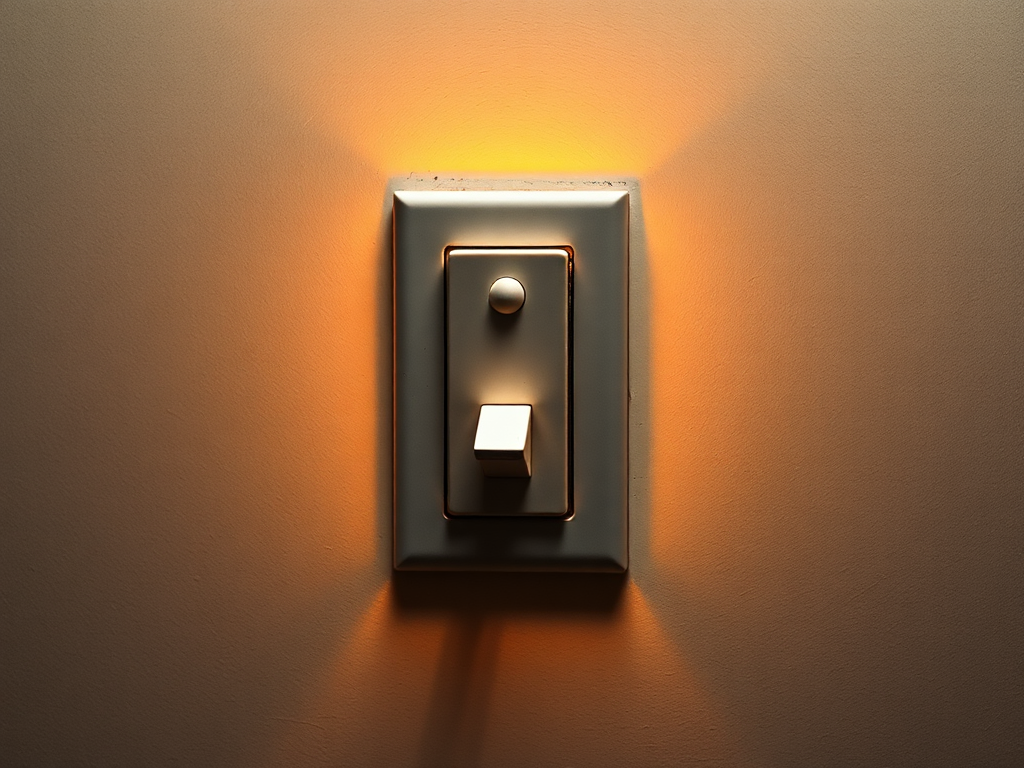
THE PROBLEM
Power Outages
Being without power for even a short period of time is a real pain.
FIRST QUESTION
Does it make financial sense to have Backup Power?
The answer is yes, if the cost of being without power is more than the cost of getting backup power.
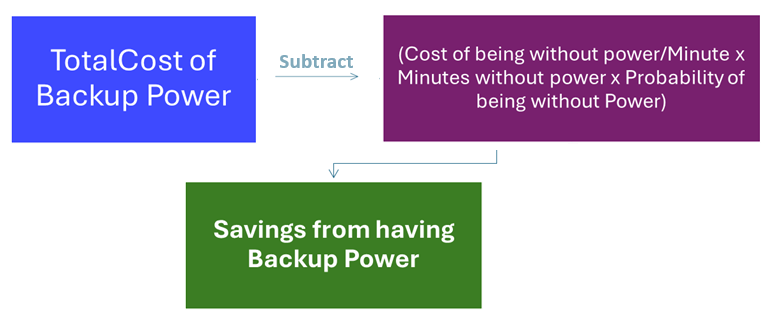
If you have already calculated the value of backup power and would like to learn how to get the best deal on backup power, let’s schedule a time to talk
If you need more help in determining if backup power makes sense for you, please click here and schedule a free consultation or learn more below:
Cost of Being Without Power
The cost of an outage is typically underestimated. Many firms simply assume it is the lost profit from the sales missed during the outage. This is fine for store fronts that rely on walk-in traffic, but it is useless for business-to-business operations, particularly industrial or healthcare firms.
In Business-to-Business, an outage has a cascading impact. For example, an outage at a firm that supplies to a Just-In-Time (“JIT”) manufacturer could cause the manufacturer to shutdown due to lack of parts. If there are other JIT operations in the value chain, an outage at a single supplier can cascade and take down the entire supply chain.
Brand protection is another powerful force driving the need for backup power. Companies spend years and hundreds of millions of dollars building their brands that provide a competitive edge. Missed deliveries or spoiled product can tarnish their reputation.

Healthcare outage costs are staggering because lives are at stake. It is easy to understand the direct impact of a power outage affecting life-sustaining technology, but the impact can be more widespread and insidious. Consider the 12 nursing home residents that perished from heat exhaustion when a hurricane knocked out power for several days.
Calculating the cost of an outage is a team effort, requiring representatives from all departments, including finance, sales, operations, customer support and maintenance to provide input. In such a meeting, perform a brainstorming exercise with each person providing the list of implications, downstream impacts, and an estimate of the costs. Exergy provides free facilitation for brainstorming outage cost estimation. To talk to one of our consultants, click here.
NEXT QUESTION
How Long Do Outages Last?
Reasonably good statistics can be obtained from SAIDI (System Average Interruption Duration Index), a reliability index that utilities publish that measures the average amount of time a customer experiences an outage. The following links provide both data and background.
https://www.eia.gov/electricity/annual/html/epa_11_01.html
https://en.wikipedia.org/wiki/SAIDI
SAIDI information is comprehensive, but misleading. The numbers are reported on a per-customer basis, which dramatically understates the duration of an outage for those experiencing an outage. They take the total number of outage hours divided by the total number of customers served by that utility.
Since only a small percentage of customers are actually without power, you need to divide the SAIDI number by the percentage of customers who actually do not have power. For example, if the SAIDI number is 1 hour but only 5% of customers are actually without power, the effective outage duration for those without power is 1 hour / 5%, or 20 hours.
Averages are also misleading. There is a huge difference between being down once a year for an hour, and being down 60 times in a year for 1 minute each time. A one-minute power outage could require several hours to recover. It’s important to remember that how long your operation is down is more important than the length of the outage.
Outage duration follows a probability curve. The following graph displays the probability of an outage as a function of the outage duration.
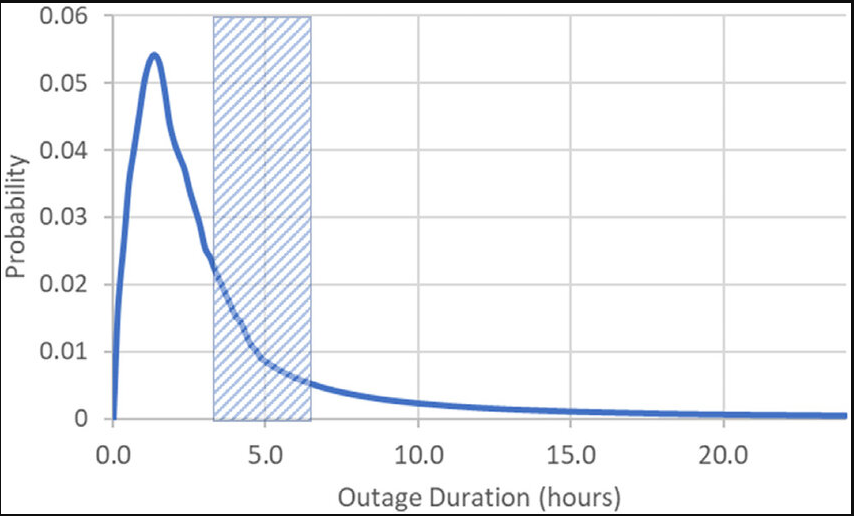
The statistics can be confusing and very granular. Exergy helps you get the right information for your decision. Book time with one of our consultants here, it’s free.
Probability of an Outage
“In this world, nothing is certain except death and taxes”; but outages are pretty close!
On average 90% of commercial and industrial customers suffer at least one power outage annually.
The probability of an outage is highly influenced by your location. More than 80% of outages are the result of downed wires caused by weather events. Areas subject to hurricanes, northern states impacted by blizzards, and tornado alley experience higher probability of outages compared to the national average. The following map shows the areas most likely to suffer outages.
The duration of an outage is also probabilistic: the following probability graph displays the probability of an outage as a function of its duration. As you can see, the graph is highly skewed with the vast majority of outages being short. The mathematics of this effect are well understood and for a given location Exergy will calculate how much backup is required to meet a duration within a confidence interval.
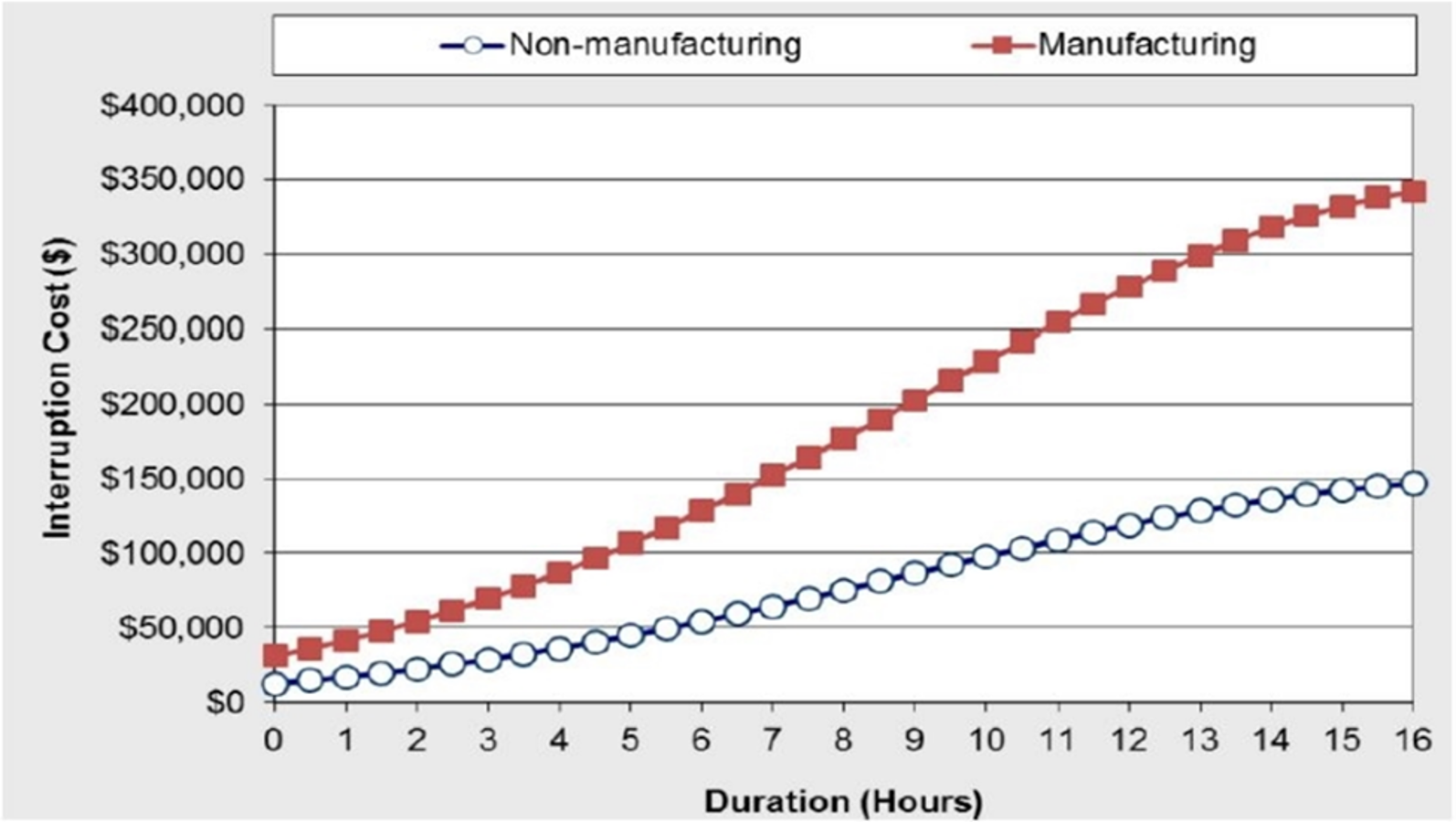
To learn more about outage durations and what backup you need schedule a free consultation with one of our consultants here.


